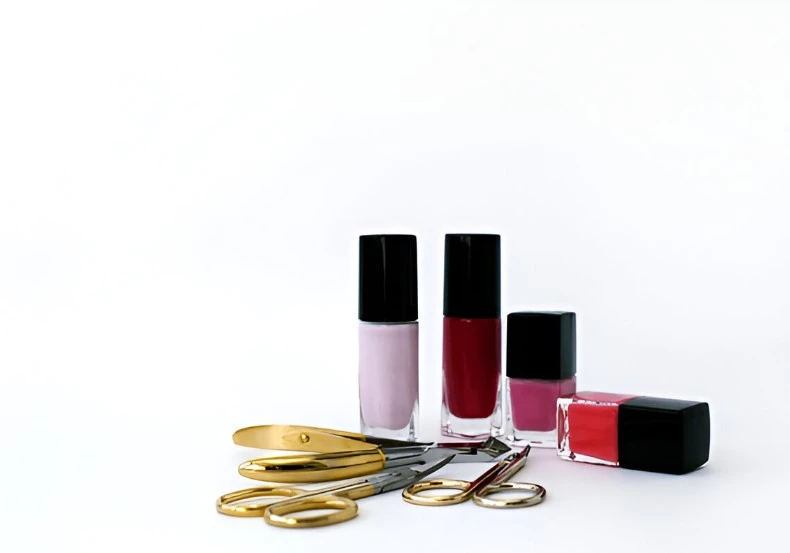Nail Polish for Sensitive Skin: The Ultimate Guide to Safe, Stylish Choices
Navigating the world of nail polish when you have sensitive skin can be tricky. For individuals prone to skin sensitivities, finding nail products that don’t cause irritation is essential. Thankfully, the nail industry has responded with options that are both stylish and gentle on the skin. This guide will cover everything you need to know about choosing nail polish that suits sensitive skin without compromising on style.
Key Takeaways:
- Understand Sensitivities: Identify the ingredients that commonly trigger skin reactions.
- Prioritize Hypoallergenic Products: Seek out polishes designed specifically for sensitive skin.
- Avoid Harmful Chemicals: “Free-from” polishes minimize allergens and irritants.
- Choose Nail Ideas That Work: Explore designs that suit gentle nail products.
- Balance Style with Safety: Select colors and styles without irritating the skin.
1. Understanding Sensitivities in Nail Care
Sensitive skin can be highly reactive to certain chemicals, fragrances, and preservatives found in many nail polish formulas. This sensitivity often extends to both the hands and face makeup, where similar irritants may be present. Common symptoms include redness, itching, and dryness around the nail bed and cuticles. Understanding the root cause of these reactions can be the first step in selecting safer nail products.
2. Key Ingredients to Avoid in Nail Polish for Sensitive Skin
The ingredients to avoid often include toluene, formaldehyde, camphor, and dibutyl phthalate (DBP). These chemicals are common in standard nail polishes but can trigger irritation in sensitive individuals. Toluene, for instance, is known for its strong scent and can cause respiratory irritation, while formaldehyde can lead to skin rashes. Seek out nail polishes that are labeled as “3-free,” “5-free,” or even “10-free,” meaning they exclude a set number of potentially harmful chemicals.
3. Hypoallergenic Nail Polishes: A Better Option for Sensitive Skin
A growing number of nail brands are offering hypoallergenic polishes that exclude common allergens. These polishes are specifically formulated for sensitive skin and are ideal for anyone who has had previous reactions to standard nail products. Hypoallergenic nail polish options often feature soothing ingredients like aloe vera or vitamin E, which can be gentle on both the nails and surrounding skin.
4. Selecting “Free-From” Nail Polishes
Many nail polish brands have embraced the “free-from” movement. Here’s a breakdown of the different “free-from” labels and what they mean:
| Free-From Label | Ingredients Excluded |
|---|---|
| 3-Free | Toluene, formaldehyde, and dibutyl phthalate (DBP) |
| 5-Free | 3-Free plus formaldehyde resin and camphor |
| 7-Free | 5-Free plus xylene and ethyl tosylamide |
| 10-Free | 7-Free plus parabens, animal by-products, and fragrances |
Choosing a nail polish labeled as 5-free or 10-free can be a great way to minimize exposure to potentially harmful ingredients without sacrificing beauty.
5. Nail Ideas and Designs for Sensitive Skin

For sensitive skin, consider designs that limit contact with irritating materials. Minimalistic styles, such as French tips, polka dots, or negative space nails, are not only trendy but also involve less nail polish, which can reduce the likelihood of irritation. If you love nail art but have sensitive skin, opt for designs that keep polish away from the skin around the nails.
6. Skin Care Around Nails: Prepping and Protecting
Before applying any polish, make sure to care for the skin around your nails. Using a gentle, fragrance-free hand cream before and after a manicure can help protect the skin. Applying a nail barrier, like a cuticle balm or protective oil, shields your skin from the chemicals in nail polish. Regular moisturizing can prevent dryness and irritation, especially when using gentle nail products.
7. Testing New Products on Sensitive Skin
Always do a patch test before applying new nail polish products. Paint a small amount on one nail or the underside of the wrist and wait 24 hours to check for any adverse reactions. This test is especially useful for sensitive skin, as it allows you to identify any possible irritants before they come into contact with your nails.
8. Makeup and Nail Polish Synergy for Sensitive Skin
Choosing hypoallergenic nail polish often goes hand in hand with sensitive skin makeup products. Opting for fragrance-free, non-comedogenic face makeup can help minimize overall skin sensitivity. Just as in nail polish, face makeup can contain chemicals that aggravate sensitive skin. By choosing clean beauty options for both nails and face, you can achieve a cohesive, gentle beauty routine that reduces the risk of skin irritation.
9. Popular Hypoallergenic Nail Polish Brands

There are several excellent brands offering nail polish suitable for sensitive skin. Ella+Mila, Zoya, and Butter London are popular choices. These brands often emphasize eco-friendly formulas and have become favorites for those with skin sensitivities. Look for labels that specify “hypoallergenic” or “dermatologist-tested” to ensure you’re using products tailored to sensitive skin needs.
10. DIY Tips for Sensitive Skin Nail Care
For those looking to go beyond hypoallergenic polish, consider a DIY approach:
- Natural Nail Polish Removers: Standard removers can be harsh, but natural ones made with ingredients like soy can be gentler.
- Homemade Nail Treatments: Olive oil or coconut oil can serve as natural cuticle softeners.
- Essential Oils for Fragrance: For those who miss fragrance in nail products, consider a tiny drop of essential oil on your hands after your manicure (just not near the polish).
FAQ
- How do I know if I have sensitive skin on my hands?
Symptoms include redness, itching, or dryness around the nails, especially after using certain nail products. - Are gel polishes safe for sensitive skin?
Gel polishes are often more abrasive, so it’s best to use only hypoallergenic, free-from gels or consult a dermatologist. - What nail ideas work best with hypoallergenic polish?
Simple designs, like French tips or minimal dots, often reduce the chance of irritation by limiting polish use. - Can I match hypoallergenic nail polish with my face makeup?
Yes! Many hypoallergenic products exist for both, making it easier to achieve a cohesive, sensitive-skin-friendly look. - Do “natural” nail polishes work for sensitive skin?
Many natural polishes lack irritants, but always check for “free-from” and hypoallergenic labels to be safe.
By choosing nail polish and nail ideas that prioritize sensitive skin, you can enjoy stylish, comfortable manicures that enhance your overall beauty routine.

